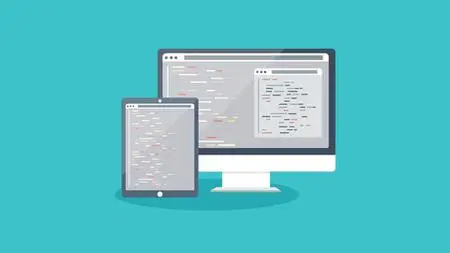Puppet 5 - From Beginner To Paid Professional: 2-In-1
Last updated 5/2018
MP4 | Video: h264, 1280x720 | Audio: AAC, 44.1 KHz
Language: English | Size: 3.66 GB | Duration: 4h 51m
Last updated 5/2018
MP4 | Video: h264, 1280x720 | Audio: AAC, 44.1 KHz
Language: English | Size: 3.66 GB | Duration: 4h 51m
Acquire the key skills of Puppet to effectively manage and automate your IT infrastructure
What you'll learn
Everything you need to become a Puppet professional, from creating manifests with Puppet 5.0 to managing and deploying your Puppet code on the cloud
Build complex configuration files with dynamic data using Puppet's EPP template mechanism
Manage Docker and AWS with Puppet
Learn the powerful new features of Puppet 5, including loops and data types
Manage your Puppet code with Git
Use Puppet's key-value database
Requirements
No prior knowledge of Puppet needed.
Description
The challenges of IT infrastructures and the need to automate common activities has become a major requirement in many large organizations. Puppet is one such configuration management tool that allows to efficiently manage and automate all your IT infrastructure.
This comprehensive 2-in-1 course teaches you the key skills of Puppet 5.0 to effectively manage and automate your IT infrastructure. You'll learn through quick step-by-step instructions, clear explanations, and interesting real-world examples. It will give you all you need to know to use this essential IT power tool while applying these solutions to real-world scenarios.
This training program includes 2 complete courses, carefully chosen to give you the most comprehensive training possible.
The first course, Puppet 5 – The Complete Beginner’s Guide, gets you up-and-running with the very latest features of Puppet 5. From beginner to confident Puppet user with a series of clear, practical examples it will help you manage every aspect of your server setup. You will learn how to install packages and config files, create users, set up scheduled jobs, provision cloud instances, build containers, and more. Every example in this course deals with something real and practical that you're likely to need in your work, and you'll see the complete Puppet code that makes it happen, along with step-by-step instructions on what to type and what output you'll see.
The second course, Puppet 5 – From Beginner to Pro, starts off with explaining how to manage data with Hiera. You will then install ready-to-use modules from the Puppet Forge using the r10k tool. You will also learn some of the best ways to organize your Puppet code using roles and profiles. Next, you will learn to build complex configuration files with dynamic data using Puppet's EPP template mechanism. You will learn some new support features of Puppet 5 for deployment on Docker containers. Finally, you will learn how to use Puppet to provision cloud servers on AWS.
By the end of this Learning Path, you will have a greater understanding of puppet 5.0 and how to use all it's different parts to give you a powerful configuration management tool.
Meet Your Expert(s):
We have the best work of the following esteemed author(s) to ensure that your learning journey is smooth:
John Arundel is a DevOps consultant, which means he helps people build world-class web operations teams and infrastructures and has fun doing it. He was formerly a senior operations engineer at global telco Verizon, designing resilient, high-performance infrastructures for major corporations such as Ford, McDonald's, and Bank of America. He is now an independent consultant, working closely with selected clients to deliver web-scale performance and enterprise-grade resilience on a startup budget. He likes writing books, especially about Puppet (Puppet 2.7 Cookbook and Puppet 3 Cookbook are available from Packt). He also provides training and coaching on Puppet and DevOps, which, it turns out, is far harder than simply doing the work himself. Off the clock, he is a medal-winning, competitive rifle and pistol shooter and a decidedly uncompetitive piano player. He lives in a small cottage in Cornwall, England and believes, like Cicero, that, if you have a garden and a library, then you have everything you need.
Overview
Section 1: Puppet 5 – The Complete Beginner’s Guide
Lecture 1 The Course Overview
Lecture 2 What Is Puppet?
Lecture 3 Getting Ready for Puppet
Lecture 4 Hello, Puppet – Your First Puppet Manifest
Lecture 5 Managing Packages
Lecture 6 Services
Lecture 7 Getting Started with Git
Lecture 8 Distributing Puppet Manifests
Lecture 9 Fetching and Applying Changes Automatically
Lecture 10 Files
Lecture 11 Packages
Lecture 12 Services
Lecture 13 Users
Lecture 14 Cron Resources
Lecture 15 Exec Resources
Lecture 16 Introducing Variables
Lecture 17 Introducing Expressions
Lecture 18 Finding out Facts
Lecture 19 Iterating over Arrays
Section 2: Puppet 5 – From Beginner to Pro
Lecture 20 The Course Overview
Lecture 21 Why Hiera?
Lecture 22 Adding Hiera Data to Your Puppet repo
Lecture 23 Types of Hiera Data
Lecture 24 Interpolation in Hiera Data
Lecture 25 The Hierarchy
Lecture 26 Creating Resources with Hiera Data
Lecture 27 Managing Secret Data
Lecture 28 Using Puppet Forge Modules
Lecture 29 Using Modules in Your Manifests
Lecture 30 Exploring the Standard Library
Lecture 31 Writing Your Own Modules
Lecture 32 Classes
Lecture 33 Defined Resource Types
Lecture 34 Managing Classes with Hiera
Lecture 35 Roles and Profiles
Lecture 36 What Are Templates?
Lecture 37 Using Templates in Your Manifests
Lecture 38 Iteration in Templates
Lecture 39 Understanding Containers and Deployment with Docker
Lecture 40 Managing Docker with Puppet
Lecture 41 Managing Docker Images
Lecture 42 Building Dynamic Containers
Lecture 43 Persistent Storage for Containers
Lecture 44 Networking and Orchestration
Lecture 45 Running Puppet Inside Containers
Lecture 46 Introducing the Cloud
Lecture 47 Setting Up an Amazon AWS Account
Lecture 48 Getting Ready to Use puppetlabs/aws
Lecture 49 Creating EC2 Instances with Puppet
Lecture 50 Managing Custom VPCs and Subnets
Lecture 51 Provisioning AWS Resources from Hiera Data
Lecture 52 Getting the Demo repo
Lecture 53 Adapting the repo for Your Own Use
Lecture 54 Bootstrapping a New Node
This Learning Path is designed for those who are new to Puppet, including system administrators and developers who are looking to manage computer server systems for configuration management.



